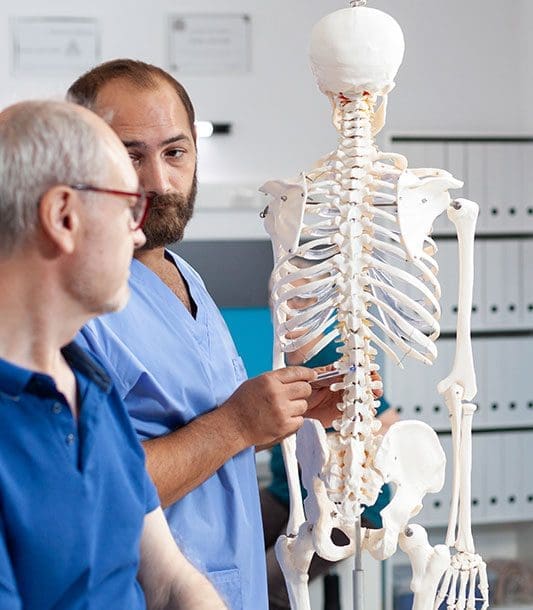What are the treatments for spinal cord compression?
If you are not experiencing the symptoms of cauda equina syndrome, it doesn’t mean you can forego medical attention. There are many treatments for spinal cord compression, and the less severe cases do not require surgery or emergency care.
Spinal decompression therapy
Spinal decompression therapy is an effective and advanced spinal treatment therapy used to manage pain due to spinal cord compression. Spinal decompression therapy stretches the spinal column in order to relieve pain and pressure in the spine. This can relieve neck, back, leg, and arm pain caused by spinal cord compression. Along with pain reduction, spinal decompression therapy may help people regain mobility and nerve function in the areas affected by CSM.
Upper cervical chiropractic
Upper cervical chiropractic is a viable treatment option for people experiencing cervical myelopathy, especially those with symptoms around their neck. Upper cervical chiropractic is a technique that uses small movements around the upper spine to adjust the position of a misaligned spine. This technique can greatly improve spine health and leave people with reduced pain, more mobility, and better overall functioning. Because this area is beside the brain stem, compression and misalignment can put added pressure on the brain stem. This may cause poor functioning in the connection between the brain and the rest of the body.
Neck adjustment
A neck adjustment is another good treatment option for people experiencing cervical myelopathy. Neck adjustments realign the top two bones in the spine along the neck. Readjusting the position of these bones can cause a chain reaction and better help the rest of the spine realign.
Surgery
If surgery is required our chiropractors will refer you to a recommended specialist and consult with them for optimal recovery, if it’s not needed then you will receive the necessary treatment from your chiropractor.



